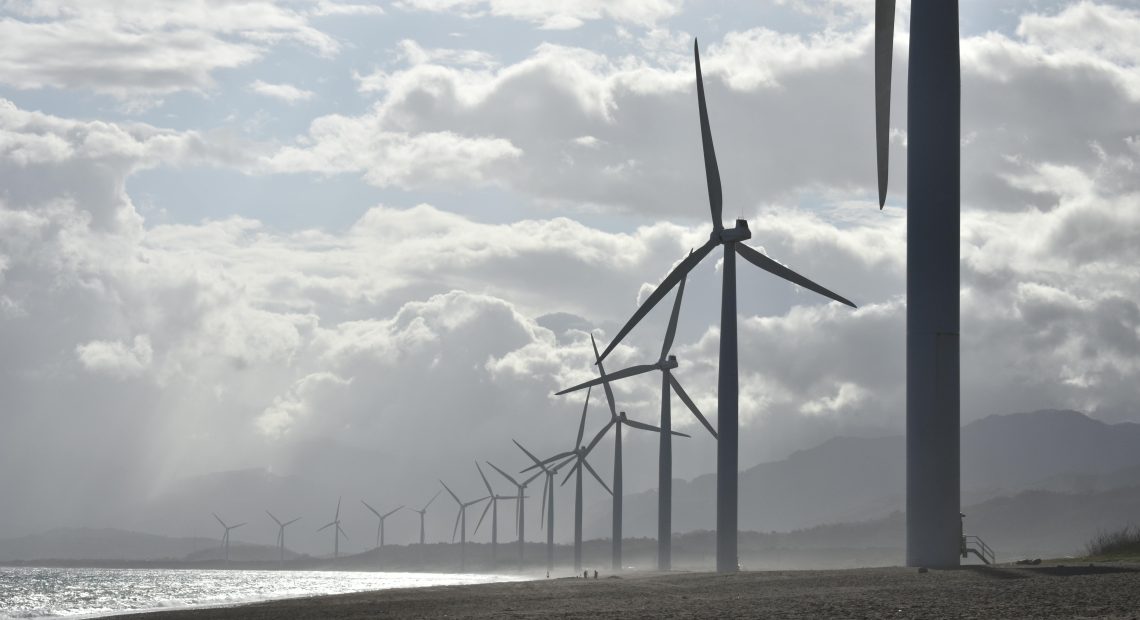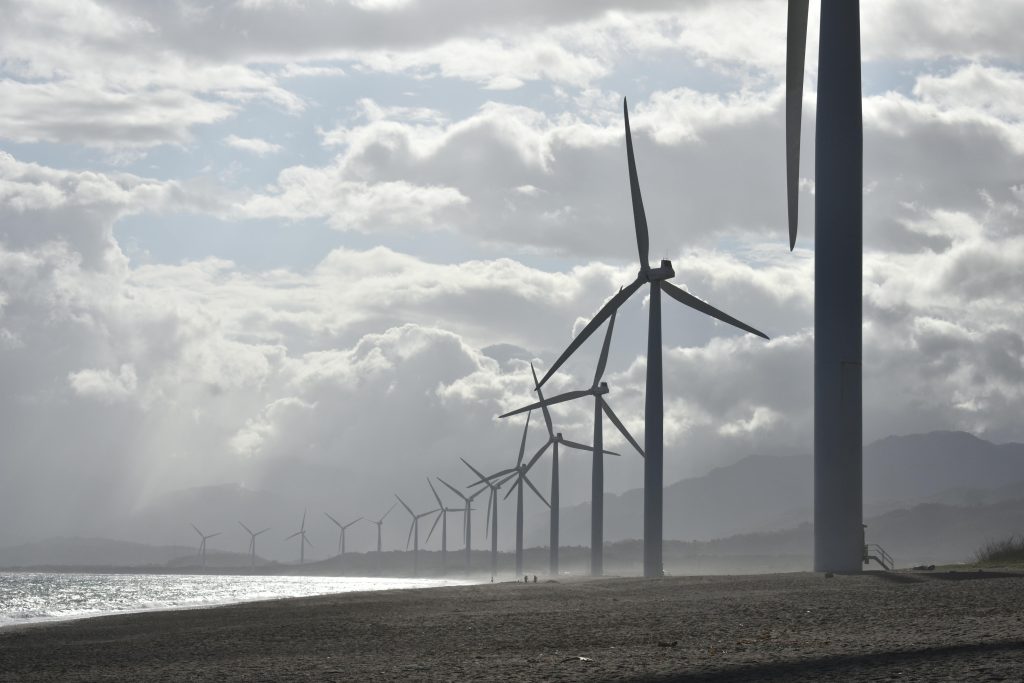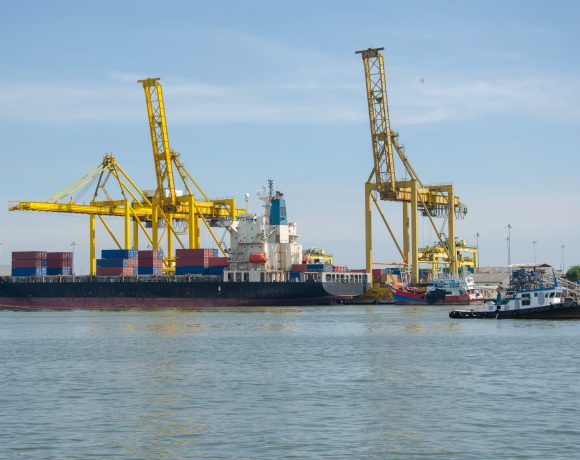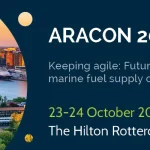Greenwashing vs. Real Sustainability: How to Spot the Difference

In today’s world, sustainability is no longer just a niche topic. It’s now a key focus for many. People want to buy products that are good for the planet. This has led to real changes in how businesses operate.
But, there’s a dark side to this trend. Some companies find it cheaper to look green than to actually be green. This is called greenwashing. It’s when companies make false or exaggerated claims about being eco-friendly.

For those who want to buy ethically, it’s hard to tell what’s real and what’s not. Companies often use terms like “eco-friendly” and “natural” without explaining what they mean. This makes it tough for even the most careful shoppers to make good choices.
The problem goes beyond just confusing consumers. Greenwashing can also slow down real environmental progress. It takes away resources from true sustainable development efforts. It’s important to know the difference to make sure our money helps the planet.
Key Takeaways
- The rise of environmental consciousness has created both genuine sustainability innovations and misleading marketing tactics
- Greenwashing involves making exaggerated or false environmental claims to appeal to eco-conscious consumers
- Vague terminology without substantiation is a common red flag in environmental marketing
- Authentic sustainable development requires measurable actions and transparent reporting
- Consumer ability to distinguish between genuine and false claims directly impacts environmental progress
- Companies with legitimate sustainability programmes typically provide specific, verifiable evidence of their practices
- Critical evaluation of green claims helps direct consumer support toward genuinely responsible businesses
Understanding Greenwashing and Its Implications
Behind the eco-friendly marketing lies greenwashing, a form of deception. As people care more about the environment, companies must show they’re green. But this push for greenness can lead to false claims.
Greenwashing makes it hard to tell real eco-stewardship from marketing tricks. It’s not just about fooling consumers. It can also harm real green efforts and make people doubt environmental projects.
Definition of Greenwashing
Greenwashing is when companies mislead people into thinking they’re more green than they are. This makes them seem eco-friendly but hides their true environmental harm.
The term started in 1986. Environmental activist Jay Westerveld saw a hotel claiming to save water by reusing towels. But the hotel was also expanding and causing environmental damage.
Greenwashing shows up in many ways in business today:
- Misleading packaging with nature images or green colours but not sustainable
- Vague environmental claims like “eco-friendly” without proof
- Selective disclosure showing small green steps but hiding big environmental problems
- False certification symbols that look like real environmental approvals
- Irrelevant claims about benefits that are just the law or common practice
Greenwashing can be small exaggerations or big lies. Some companies might stretch the truth a bit. Others make up whole green programmes that don’t exist.
For shoppers today, knowing about greenwashing is key. It helps them choose truly green businesses. This way, they avoid supporting companies that just pretend to be green for profit.
Historical Context of Greenwashing
In the 1990s, as rules got stricter and people became more aware, companies spent more on green advertising. They made many claims about being eco-friendly without proof. Products were suddenly called “natural” or “green” without real evidence.

In the late 1990s, big companies faced criticism for false green claims. This showed that people and groups were getting better at spotting and challenging greenwashing.
In the past couple of decades, greenwashing has reached “epidemic” levels, according to advertising firm Ogilvy & Mather. This rise can be attributed to growing public awareness of environmental issues, with consumers increasingly using their purchasing power to support companies that are genuinely committed to sustainability and transparency.
The early 2000s saw more subtle greenwashing. Companies focused on small green steps while hiding bigger environmental problems. This was because of stricter rules and more sceptical consumers.
The digital age changed greenwashing again. Social media let companies show off their green side but also let critics expose false claims. This was a double-edged sword for companies.
By the 2010s, greenwashing got even more clever. Companies did small green projects to look good but didn’t really change. Terms like “clean coal” and “carbon neutral” were used to seem green without actually being so.
Now, greenwashing includes hiding behind complex supply chains and picking and choosing what environmental data to share. This shows how companies adapt to being watched more closely.
Knowing how greenwashing has evolved is key to tackling it today. As environmental issues become more common, the risks of lying about being green grow. This can harm a company’s reputation and lead to legal trouble.
Understanding Greenwashing and Its Implications
Greenwashing is when companies pretend to care about the environment but don’t really do anything. As people become more aware of eco-issues, businesses use tricks to seem green. It’s important for shoppers to spot these tricks to make real eco-friendly choices.
Common Practices in Greenwashing
Companies use many ways to seem greener than they are. These tricks range from small lies to big deceptions. They aim to make money from the growing demand for green products.
Vague terminology is a big trick. Words like “eco-friendly,” “natural,” or “green” mean different things to different people. For example, a product might say it’s “green” because it has one natural ingredient, ignoring the rest.
Another trick is selective disclosure. Companies highlight small green benefits but hide big problems. A paper company might talk about planting trees but not about its pollution or energy use.

Many products make environmental claims without proof. These claims are not checked by experts or backed by science. Words like “biodegradable” or “carbon neutral” are often used without clear explanations.
Irrelevant claims are also used. Companies focus on small green points that don’t really matter. For example, saying a product is “CFC-free” when CFCs are banned is misleading.
The “lesser of two evils” trick is when companies make bad products seem good by comparison. An SUV might be called “fuel-efficient” compared to bigger cars, even though it uses more fuel than smaller cars or other transport.
Executional greenwashing uses pictures and designs to look green. Products in green packaging or with natural images seem eco-friendly, even if they’re not.
Lastly, greenwashing by association happens when companies link themselves to green causes but don’t really change. A fast-fashion brand might support beach clean-ups but keep making clothes in harmful ways.
“The most dangerous form of greenwashing is the one that’s hardest to spot—where companies make genuine but minor environmental improvements while their core business continues to cause significant harm.”
These tricks make it hard for shoppers to know what’s real. Misleading green claims confuse people and can hurt real eco-friendly efforts. As greenwashing gets cleverer, we need to learn to spot these tricks.
Knowing about these greenwashing tricks helps us make better choices. By seeing through these tricks, we can really understand a company’s true impact on the environment.
The Rise of Eco-Consciousness in Consumer Behaviour
There’s a big change in how people shop, thanks to eco-consciousness. This change shows people care more about the planet and want to buy things that match their values. Now, ethical consumerism is everywhere, changing how products are made, marketed, and sold.
Studies show a big shift in what people want to buy. Nielsen Media Research found 66% of global shoppers are willing to pay more for green products. This change is seen across the world and in all kinds of people.
In the UK, the trend is clear too. 67% of UK shoppers look for green options for some of their purchases. This growing awareness is both a chance and a challenge for UK businesses.
Trends in Sustainable Buying
Younger shoppers, like millennials and Gen Z, lead the way in eco-friendly shopping. But, older shoppers are also joining in, showing they care about the planet too.
- Increased demand for transparency – People want to know where products come from and how they’re made
- Preference for minimal packaging – Less packaging is a big deal for those who care about the environment
- Support for local production – Buying local helps cut down on carbon emissions from transport
- Interest in circular economy models – Products that last longer and can be recycled are becoming more popular
This shift opens up big chances for companies that really care about the planet. Brands that stand up for the environment can win over customers and stand out. But, some companies might try to fake it to look green without really changing.
Even though many UK shoppers want to buy green, there’s a big gap between what they say and what they do. Only a small part of the market is made up of truly green products, despite what people say they want.
“The intention-action gap in sustainable consumption represents one of the most significant challenges in advancing environmental progress through market mechanisms,” notes the Sustainable Consumption Research Centre at the University of Manchester.
There are a few reasons for this gap:
- Price premiums – Green products often cost more, which can be a barrier
- Convenience factors – Finding sustainable options can be hard
- Information overload – It’s tough to know which environmental claims are true
- Habit and routine – Changing how we shop can be hard, even if we want to
Understanding these barriers is key for businesses and governments to help people shop more sustainably. As ethical consumerism grows, tackling these issues will help make eco-friendly choices the norm.
People now see their shopping as a way to make a difference. They want to support companies that share their values. This change means businesses need to be open about their green efforts and how they’re working to protect the planet.
Impact of Social Media on Consumer Awareness
Social media has changed how we share and get information about sustainability. It’s not just one-way marketing anymore. Now, we can talk about environmental practices worldwide instantly.
59% of UK consumers have changed what they buy because of greenwashing. This shows how awareness can really change our choices.
Thanks to social media, we can get information from many sources. We don’t just listen to what companies say. We hear from experts, groups, and other people who have tried products.
Hashtags like #PlasticFreeJuly and #FastFashionFacts have made a big impact. They’ve taught millions about environmental issues and pushed companies to do better. These movements create communities that push for real change.
Instagram and TikTok are great for showing the truth behind green ads. People share videos that show the real environmental impact of products. This makes it harder for companies to hide the truth.
“Social media has created a transparency revolution where brands can no longer hide behind carefully crafted sustainability claims. Consumers now have the tools to investigate, share findings, and demand better.”
Being aware of greenwashing can also affect a company’s bottom line. 23% of UK consumers have spent less with companies they think are greenwashing. This means companies lose a lot of money if they’re not honest about their sustainability.
But, social media isn’t perfect. Misinformation can spread fast. It’s hard to know what’s real and what’s not. Companies might use this to their advantage by sharing false information.
To deal with this, we need to learn how to spot the truth. We should look for third-party verification and check a company’s whole environmental record. Joining online communities focused on sustainability can also help.
There are real examples of how social media can lead to change. When a UK fashion retailer launched a “sustainable” line in 2021, people quickly found out it wasn’t really different. This led to a big review of their practices and more openness.
The future of social media, ethical consumerism, and corporate responsibility is exciting. Companies that are truly committed to sustainability will win the trust and loyalty of consumers.
Identifying the Tactics of Greenwashing
In the UK, a worrying trend of false environmental labels and unverified certifications has grown. It’s key for consumers to spot these tricks to choose sustainable options. Studies show 28% of UK shoppers find it hard to spot truly green products. Also, 33% doubt the truth behind green labels and claims.
Greenwashing has become more complex, using visual tricks and fake certifications. Companies know that appearing eco-friendly can win over customers, even if it’s not true.
Misleading Labels and Certifications
One common trick is using environmental claims on labels and certifications that seem real but aren’t. Many firms create their own eco-labels without outside checks. This is like them giving themselves good grades.
These fake labels often look like real ones, with green colours and leaf designs. They aim to make shoppers think positively quickly, without checking more.
Real certifications like Forest Stewardship Council (FSC) and Energy Star have strict checks. But vague terms like “eco-friendly” mean nothing and need no proof.
With so many labels, both real and fake, shoppers get confused. Even those who care about the environment find it hard to know which labels are trustworthy.
The certification landscape has become so crowded that it undermines the very transparency it was designed to create. This ‘certification confusion’ is a boon for companies engaged in greenwashing.
Even real certifications can be used wrongly. A product might show a valid certification for one part but hide other harmful aspects. For example, a paper product might have FSC certification but use harmful chemicals.
To deal with the complex world of eco-friendly marketing, shoppers should follow these steps:
- Find out if the certification body is independent and respected.
- Check if the certification needs outside checks.
- Look for clear, measurable standards, not vague claims.
- See if the certification covers the product’s biggest environmental issues.
- Check if the certification applies to the whole product or just part of it.
Groups like the UK’s Competition and Markets Authority are tackling false environmental claims. But it’s mainly up to shoppers to tell real sustainability from marketing tricks.
Knowing the difference between real certifications and greenwashing helps shoppers make better choices. By being sceptical and understanding what real certifications mean, they can better find sustainable products.
Vague Language and Ambiguous Claims
The strength of unclear language in green advertising is huge. Companies use vague words to hint at being green without clear promises. This trick lets them seem eco-friendly without really changing.
Words like “eco-friendly,” “green,” “natural,” and “environmentally conscious” are common in ads. But they often mean nothing specific. Yet, they make products seem sustainable, which can sway what we buy.
- Eco-friendly – A term with no standardised definition or measurement criteria
- Natural – Can refer to ingredients that occur in nature but may be harmful
- Green – An emotionally appealing but scientifically imprecise descriptor
- Sustainable – Without specific metrics, this becomes a subjective claim
- Earth-conscious – Suggests environmental care without defining actions
The vagueness of these terms is a key part of greenwashing. When a company says its product is “greener,” we must ask: compared to what? Without clear comparisons, these claims are hard to check.
Many companies focus on small changes while ignoring big environmental issues. A product might say it has “30% less packaging” but ignore harmful ingredients or how it’s made. This draws attention to small wins while hiding big problems.
When claims are vague, it’s a red flag. Real sustainability claims have clear data, standards, and methods. Without these, we should doubt environmental claims.
Visuals also play a big part in greenwashing. Green packaging and nature images make products seem eco-friendly. These visuals, along with unclear language, create a false sense of greenness.
To fight greenwashing, we need clear answers. Ask questions like: What makes this product sustainable? What standards prove it? What real environmental benefits does it offer? Companies that are truly green will answer these questions clearly.
Partial Truths and Cherry-Picked Facts
One sly trick is picking only the good news. Companies might talk up one green thing but hide the rest. This makes them seem better than they are.
For example, a clothes maker might say their new line has 10% recycled materials. But they don’t tell you about the 90% made in ways that harm the planet.
Partial truths use real facts but twist them. Saying a product has recycled packaging is true. But if making it pollutes a lot, the truth is hidden.
Companies might pick the right year to show how they’ve cut emissions. Or they might talk about one factory but not the rest. This makes their claims seem better than they are.
These tricks are sneaky because they’re based on real facts. A claim that’s 20% true sounds better than a lie.
To spot these tricks, ask tough questions:
- Does the claim really address the big issues?
- Is the company open about all its environmental impacts?
- Are they improving everywhere or just in some places?
- Is the progress they show real or just small changes?
Look at third-party reports for real info. Seeing steady improvement in many areas shows a company is serious about being green.
Remember, what’s not said can be just as telling as what is. If a company doesn’t talk about certain parts of their business, it might mean they’re not as green as they seem.
The Importance of Authentic Sustainability
Authentic sustainability is key for businesses. It brings many benefits that help them succeed and stay strong. As people get better at spotting real environmental efforts from fake ones, companies that truly care about sustainability see big wins.
Studies by McKinsey & Company show that companies focusing on the environment, society, and governance (ESG) do better financially. This shows that being truly sustainable is not just good for the planet but also for business.
Benefits of Genuine Sustainable Practices
Real sustainable practices bring many benefits:
- Significant cost reductions through better use of resources, less waste, and more energy efficiency
- Innovation catalysts that help create new products and open up new markets
- Enhanced brand reputation and stronger customer loyalty, thanks to caring for the environment
- Improved employee satisfaction and better talent attraction
- Reduced regulatory and supply chain risks, making businesses more stable
Real sustainability starts with saving money. Companies that use energy-saving tech can cut utility costs by 10-30% in the first year. These savings grow over time, giving big returns and helping the planet.
“Sustainability is no longer just a nice-to-have—it’s a business imperative. Our research consistently shows that companies with strong ESG performance create more value, with lower volatility, than their peers.”
Real sustainability also drives innovation. Companies that aim to reduce their environmental impact often find new ways to do things. For example, Unilever’s Sustainable Living Plan led to the creation of concentrated detergents that need less packaging and water.
Customers also reward companies that care about the environment. In the UK, 73% of consumers are willing to pay more for products from companies that are green. This is even more true for younger people, showing a growing trend.
Companies with real sustainability efforts also have happier employees. They report 55% better morale and 38% better loyalty than companies without such efforts. In today’s job market, this can save a lot of money and boost productivity.
Lastly, real sustainability makes companies more resilient. Companies that focus on sustainability are better at dealing with changing rules, supply chain issues, and shifting customer expectations.
Interface, the world’s largest modular flooring maker, is a great example. Their Mission Zero plan made them much more efficient, cutting greenhouse gas emissions by 95% while profits rose by 66% and market share grew.
The difference between real sustainability and greenwashing is huge. Greenwashing might get you attention in the short term, but only real efforts lead to lasting success and real environmental benefits.
Long-Term vs. Short-Term Approaches
Some companies focus on quick wins for sustainability, but these don’t really solve big environmental problems. They might launch eco-friendly products but keep doing things that harm the environment. Or, they might start recycling without fixing the root of the problem.
On the other hand, companies that think long-term change everything. They look at their whole business, from where they get materials to how they use energy. They aim to reduce harm at every step.
Science-based targets are key to real sustainability. These targets are based on what science says is needed to fight climate change. Companies that are serious about sustainability set clear, measurable goals. This way, everyone can see how they’re doing.
True sustainability looks at a product’s whole life, from start to finish. This means thinking about every decision, from design to recycling or disposal. It’s about making sure the environment is considered in every step.
“Sustainability is no longer about doing less harm. It’s about doing more good.”
Switching to sustainable practices is hard for businesses. Old companies might struggle to change their ways, while new ones face high costs for green tech. But, there are ways to overcome these hurdles:
- Innovation in materials and processes
- Collaborative partnerships across industries
- Strategic long-term planning
- Investment in research and development
- Employee engagement and education
Companies that see corporate social responsibility as a core value are on the right path. They know sustainability is a journey, not a one-time goal. They understand that environmental issues keep changing, so they must keep improving.
Good recycling initiatives show this ongoing effort. It’s not just about recycling; it’s about making things better over time. Companies should aim to make products that last longer and can be reused.
By choosing to support companies that really care about sustainability, we can make a difference. Every time we buy something, we can choose to support those working hard to be better for the planet.
Case Studies of Notable Greenwashing Incidents
The fast fashion industry is a prime example of greenwashing. It shows how companies deceive consumers while harming the environment. Knowing these tactics helps us make better choices and support real ethical consumerism.
Example 1: Fast Fashion’s Sustainability Claims
The fast fashion world is full of false promises. Studies show that 59% of claims by European and UK companies, like H&M, ASOS, and M&S, are not true. This is misleading for those looking for sustainable fashion.
H&M’s “Conscious Collection” is a big example of this issue. It’s marketed as eco-friendly but makes up a small part of their sales. The company’s fast fashion model leads to a lot of waste.
ASOS also promotes sustainability but its practices are questionable. Their “Responsible Edit” line is marketed as sustainable, but it focuses on just one aspect. Other environmental impacts are ignored.
M&S’s “Plan A” programme has been criticized. It has real elements but exaggerates the benefits. This is a common greenwashing tactic.
The effects of these false claims are huge. They lead to:
- Water pollution – The use of water and chemicals pollutes local water
- Textile waste – Millions of tonnes of waste end up in landfills
- Carbon emissions – Shipping and manufacturing create a lot of carbon
- Labour exploitation – Claims hide poor working conditions
Groups like the Changing Markets Foundation have exposed these issues. Their report “Synthetics Anonymous” shows how brands use vague claims while using more synthetic materials.
“The fashion industry’s current model is not sustainable. No amount of recycled materials or carbon offsetting can change this.”
For those who care about ethical consumerism, it’s key to look beyond marketing. The fast fashion industry’s greenwashing tricks play on our desire for sustainable products. But it doesn’t address the real problem of fast production and disposal.
Initiatives like Fashion Revolution’s Fashion Transparency Index are helping. They score brands on their transparency and environmental practices. This helps us know which claims are real and which are just greenwashing.
Example 2: Major Brands and Environmental Accountability
BP’s “Beyond Petroleum” campaign is a prime example of this gap. In the early 2000s, they tried to look like they were moving to cleaner energy. They used a green logo, ads about green energy, and even solar panels at some gas stations.
But, the truth was different. In 2019, ClientEarth said BP’s ads were misleading. They found that BP was really investing mostly in oil and gas, not green energy.
BP is not the only one doing this. Many big companies use similar tricks to look good but not really change. They might talk about green projects but keep doing what they always did.
“BP’s advertising focuses on their investments in new low carbon technologies. Yet they’re spending over 96% of their annual capital expenditure on oil and gas. We think that’s misleading consumers.”
These companies have clever ways to hide their big carbon footprint. They might:
- Show off small green projects but keep doing lots of harm
- Use carbon offsetting that doesn’t really work
- Set big climate goals but not plan how to reach them
- Create green brands but the main company is not
- Claim small improvements but it’s not enough
The car industry is another example. Car makers push electric cars but also fight for less strict rules on gas cars. This shows how they might talk green but act differently.
These examples show that some green efforts are just for show. The plane industry also uses carbon offsetting but keeps growing. This means they don’t really change to be greener.
When these big greenwashing cases happen, rules and laws try to stop them. But it’s hard because these companies spend a lot on making themselves look good. This makes it hard for people to know what’s real and what’s not.
Greenwashing by big companies is a big problem. It makes it hard for people to choose green options. It also slows down real changes in how companies act.
Regulatory Frameworks and Enforcement
In the UK, up to 40% of green claims might be misleading. This has led to strict rules to ensure truth in environmental marketing. With more people wanting sustainable products, there’s been a rise in false claims. This has made authorities work harder to check and enforce the rules.
The UK’s rules on green claims are key to reaching sustainable development. They set out clear rules and actions to help consumers make better choices. This way, the market becomes a place where real sustainability is valued.
UK Guidelines on Environmental Claims
The Competition and Markets Authority (CMA) leads the fight against greenwashing in the UK. In 2021, they introduced the Green Claims Code. This code has six principles to make sure environmental claims are true and backed by evidence.
- Be truthful and accurate
- Be clear and unambiguous
- Not omit or hide important information
- Make fair and meaningful comparisons
- Consider the full life cycle of the product
- Be substantiated with robust evidence
These rules apply to all businesses making environmental claims. Companies that break these rules could face big fines. These fines could be up to 10% of their global turnover under consumer protection laws.
The Advertising Standards Authority (ASA) works with the CMA to check environmental claims in ads. The ASA looks into complaints about misleading ads. They make sure ads follow the UK Code of Non-broadcast Advertising and Direct & Promotional Marketing (CAP Code).
“Businesses that make misleading environmental claims are not only potentially breaching consumer law but are also risking their reputation with customers who are increasingly demanding transparency and authenticity.”
Recently, the CMA has taken action against several big companies. In 2022, they looked into fashion retailers making vague claims without proof. This led to some companies changing their marketing to be more honest about their environmental impact.
But, regulators face big challenges. It’s hard to check claims that are not clear-cut. Also, dealing with companies that operate globally adds to the problem.
The UK’s rules on environmental claims might get even stricter. There could be:
- Tighter rules for businesses making environmental claims
- Better work between UK and international regulators
- Standard ways to measure environmental impact
- Harsher penalties for those who keep breaking the rules
- More online checks of environmental claims
The UK’s way of handling environmental claims is a good example for others. By having clear rules and enforcing them, they aim to encourage real sustainability. This way, they discourage false claims.
Role of Advertising Standards Authority
The ASA follows the UK Code of Non-broadcast Advertising and Direct & Promotional Marketing (CAP Code). This code has rules for environmental claims. It says eco-friendly marketing must be honest, clear, and backed by solid proof. The ASA looks into complaints from people and rivals, keeping ads honest.
Recently, the ASA has acted against big companies with false green claims. In 2020, Ryanair was told off for saying it was Europe’s “lowest emissions airline” without proof. The ASA said the claims were wrong and made Ryanair pull the ads.
In 2022, the ASA banned HSBC ads about its green efforts. The ads talked about HSBC’s plans to be carbon-neutral and plant trees. But they didn’t say about HSBC’s big investments in fossil fuels, which the ASA found misleading.
Challenging green advertising is easy and open to anyone. The ASA looks into complaints, asks for proof from the company, and decides if the ads are okay. If not, the ASA tells everyone and can hurt the company’s image.
“Environmental claims must be based on the full life cycle of the advertised product, unless the marketing states other wise, and must make clear the limits of the life cycle.”
But the ASA has its limits. It can only ask companies to change or remove ads, not fine them. This makes some say the ASA’s warnings are just a cost for companies.
To do better, the ASA works with other groups like the Competition and Markets Authority (CMA). Together, they make rules stronger and can take legal action against those who break them.
For companies doing eco-friendly marketing, following ASA rules is key. They need to prove their green claims are true before sharing them. They should keep good records, avoid vague words, and tell people clearly about any limits to their green benefits.
How to Spot Real Sustainability
In today’s market, it’s easy to get lost in eco-friendly marketing. But, there are clear signs of real sustainability. Look for recognisable certifications and labels. They show a company’s true commitment to the environment.
Recognisable Certifications and Labels
Real sustainability certifications have strict standards and are checked by independent groups. They are not just claims. These certifications ensure companies meet high environmental and social standards.
Some certifications are well-known and trusted. For example, the Forest Stewardship Council (FSC) ensures wood products come from well-managed forests. The Marine Stewardship Council (MSC) certifies fishing that keeps oceans and fish healthy.
For food, look for USDA Organic and Soil Association Organic labels. They mean products are grown without harmful chemicals. Fairtrade certification also ensures fair pay and safe working conditions for farmers.
Energy Star labels show products that save energy. The EU Ecolabel indicates products have a lower environmental impact. These labels help you make choices that are better for the planet.
When checking certifications, look for these things:
- Independence: The best certifications come from groups with no ties to the companies they check.
- Transparency: Good certifications share their standards and checks openly.
- Scientific basis: Look for certifications based on science and evidence.
- Holistic approach: The best certifications look at many environmental impacts, not just one.
- Regular verification: Regular checks ensure companies keep meeting standards.
Be careful of certifications that seem too easy or lack strict checks. Some labels might look real but are not. Others might focus on one thing while ignoring others.
Even the best certifications have limits. They might not cover everything a company does. For example, a product might be organic but use a lot of water or have high carbon emissions.
“Certifications are valuable tools, but they’re just one piece of the sustainability puzzle. Consumers should view them as starting points for further investigation.”
For more info on certifications, check out the Ecolabel Index. It tracks over 400 environmental labels worldwide. Guides from Which? and the Ethical Consumer also help understand different certifications.
When shopping, don’t just look at the logo. Learn what it means. Many certification websites let you check if a product is really certified. This helps avoid fake labels and misleading claims.
Knowing about good certifications helps you choose companies that really care about the environment. This way, you support those making real efforts, not just using green terms for marketing.
Transparency and Company Practices
Being transparent means more than just reports. It’s about sharing all the good and bad about our impact on the environment. Companies that are truly green will talk openly about their challenges.
When checking a company’s claims, look for real targets based on science. These goals should be clear, measurable, and have a deadline. It’s not just about saying you’ll be greener.
Companies that work towards a circular economy show they really care. They aim to use resources over and over again, not just reduce waste. This is a big step towards being truly green.
Businesses that focus on making things better, not just less bad, are leading the way. They see their role as helping the environment, not just doing less harm.
To check if a company is really committed to being green, try these steps:
- Look at their sustainability reports for real numbers and goals
- Check what environmental groups say about them
- See how they rank in green industries
- Find out if they’re open about their suppliers
- See if being green is part of their main plans
How a company is run can show its true values. Look for leaders who make green choices, and boards that watch over these efforts. When green thinking is part of the main business, it shows real dedication.
Companies like Patagonia show their full environmental picture and aim high for bettering it. Unilever also shares detailed green reports, showing big companies can be truly responsible.
The push for real green efforts has made consumers more powerful. They support brands that are open and honest about their green actions. This change is pushing companies to be more than just green-washers.
Learning to spot true green efforts can help us all. We can choose to support companies that are really working towards a better future. This way, we can help make a real difference.
The Role of NGOs and Advocacy Groups
Non-governmental organisations and advocacy groups are key in the fight against greenwashing. They act as watchdogs, checking corporate claims and ensuring businesses are truthful about their environmental impact. This helps consumers make better choices for a sustainable future.
NGOs have a big role in fighting false environmental claims. They do independent research, run awareness campaigns, and sometimes take legal action. Their efforts have made companies think twice about making false green claims.
Notable Organisations Combatting Greenwashing
Greenpeace is well-known for exposing greenwashing. They have a history of challenging companies with their actions and investigations. They even have a “Greenwash Detection Kit” to help spot false claims.
“When companies spend more on advertising their environmental initiatives than on the initiatives themselves, that’s a clear warning sign of greenwashing. Our job is to shine a light on these discrepancies.”
ClientEarth uses legal action to fight greenwashing. They recently complained to BP about misleading ads. BP was promoting green projects but mostly investing in oil and gas.
The Environmental Defense Fund works with businesses to improve their green practices. They have a program to help companies be more sustainable. They believe in using market solutions to protect the environment.
Fashion Revolution focuses on the fashion industry, known for greenwashing. They rank fashion brands based on their environmental and social transparency. This helps consumers compare companies in the same industry.
These groups use many strategies to fight greenwashing:
- They do deep research into corporate claims
- They take legal action against false ads
- They educate consumers about sustainable choices
- They create standards for environmental performance
- They work directly with companies to improve
Many groups have tools to check corporate environmental performance. The World Resources Institute created a global standard for emissions. These tools help measure if companies are living up to their claims.
Consumers can help by following these groups’ reports and guidelines. They can also join campaigns and donate money. This support is vital for these groups to keep fighting greenwashing.
The work of NGOs has a big impact. They push for better regulations and make companies more honest. As people care more about sustainability, these groups will play an even bigger role.
Community Actions for Sustainable Practices
Community groups push for ethical consumerism and real sustainability. A survey found 54% of UK shoppers would stop buying from companies that lie about being green. Also, 18% have already stopped buying from companies that make false green claims.
Local groups are mobilising these concerned consumers. When communities come together, they can force companies to change. This can lead to better practices or the end of misleading claims.
Consumer boycotts are a strong form of action. They hit companies where it hurts—their profits. For example, UK communities have pushed big retailers to cut down on plastic packaging through boycotts.
Social media has made these voices even louder. Local groups expose greenwashing online, creating big awareness campaigns. These campaigns can’t be ignored by companies.
Investing ethically is another way communities can make a difference. Ethical investment groups are buying shares to influence companies’ environmental policies. They ask tough questions and propose changes at shareholder meetings.
Communities are also creating alternatives through recycling initiatives. Repair cafés teach people to fix things, reducing waste. This goes against companies that promote disposable products.
Community gardens and allotments show how to grow food sustainably. They provide fresh produce and teach about real sustainability. This contrasts with companies that make false “natural” claims.
Zero-waste groups are also making a big impact. They run bulk buying schemes and packaging-free shops. These practical examples show what sustainable living looks like.
“When communities create working models of sustainability, they expose greenwashing by showing what genuine environmental commitment actually looks like in practice,” explains Dr. Emma Thompson, environmental sociologist at the University of Manchester.
Local groups are also pushing for stronger laws. They work with councils to set and enforce environmental standards. This can lead to changes in national policies.
The Sustainable Farnham initiative is a great example. It did environmental audits of local businesses and created a sustainability certification. This exposed greenwashing and helped businesses be more sustainable.
The Bristol Clean Air Alliance shows how focused campaigns can achieve goals. They pushed companies to be honest about emissions and helped change city policies.
These efforts work because they offer real alternatives and challenge false claims. They make it hard for companies to keep up greenwashing. This ensures companies must change their ways, not just their marketing.
For those wanting to help, local environmental groups are a good place to start. They welcome volunteers and teach about sustainability. This helps people spot greenwashing in their daily lives.
These community actions do more than help the environment. They create informed consumers who can spot real sustainability. This is key to fighting greenwashing.
Consumer Tools for Ethical Choices
In today’s world, 71% of Brits doubt what companies say about the environment. This doubt is well-founded, with 15% of UK shoppers boycotting companies that lie about being green. As more people want to shop ethically, it’s key to have reliable ways to check if companies are really responsible.
Resources for Researching Brands
Many platforms now help us understand what companies really do. These tools give clear, detailed checks, not just what companies say. Ethical Consumer in the UK offers detailed guides and ratings on thousands of companies and products. They look at environmental impact, animal welfare, and workers’ rights.
Good On You focuses on fashion, rating brands on their impact on people, the planet, and animals. Their easy ratings help shoppers choose ethical fashion.
“Ethical consumerism isn’t about perfection—it’s about making informed choices with the best information available. When consumers have access to reliable data, they can drive meaningful change through their purchasing power.”
The B Corp certification is a tough test of a company’s responsibility. Companies must show they’re good for the planet and people. The B Corp directory lists companies that aim to make money and do good.
Looking into corporate sustainability reports can also help. These reports on company websites share environmental and social efforts. Look for:
- Specific, measurable targets
- Third-party checks on environmental claims
- Open talk about challenges and failures
- Year-on-year data showing progress
- Details on supply chain impacts
Industry benchmarks like the CDP (formerly Carbon Disclosure Project) rank companies on their green efforts. Their reports show who’s leading and who’s falling behind, helping consumers compare.
Academic studies offer unbiased views on companies’ green claims. Universities and think tanks publish research on industries and companies. This research cuts through marketing to show what’s real.
Apps like Ethical Barcode make quick checks easy. Just scan a barcode to see if a product is ethically made.
When checking brands, look for these signs of real sustainability:Transparency– Does the company share all, good and bad?Specificity– Are claims backed by real data?Third-party verification– Has someone else checked their claims?Holistic approach– Does the company care about the environment, people, and governance?
It’s best to use many sources to get a full view. This is because 71% of British shoppers doubt what companies say about being green.
By using these tools, we can choose to support businesses that are truly green. This way, our shopping can help make the world a better place.
Apps and Websites That Aid Consumer Decision-Making
The digital world offers many apps for making eco-friendly choices. They give quick info on products’ carbon footprint, ethical making, and sustainability.
Some popular apps in the UK include:
- Good On You – Rates fashion brands on their impact on people, animals, and the planet.
- Giki – Scans barcodes and gives badges for 13 ethical and environmental criteria.
- Think Dirty – Finds harmful ingredients in personal care products, for health and the planet.
- CoGo – Connects you with businesses that share your values and tracks your positive impact.
- Ethical Consumer – Offers detailed ratings and profiles for ethical shopping.
There are also websites for comparing sustainable products. They let you check energy efficiency of appliances and more.
Carbon calculators are also useful. They show the environmental impact of what we buy and how we live. Popular ones are:
- WWF Footprint Calculator – Assesses your environmental impact.
- Carbon Trust Calculator – Measures and reduces carbon emissions.
- My Climate Journey – Gives tips to lower your carbon footprint based on your life.
When choosing tools, look at how they verify info and their methods. The best ones:
- Use data from many sources
- Explain how they assess things
- Keep their info up to date
- Reveal any conflicts of interest
- Provide evidence for their claims
To use these tools well, first decide what sustainability issues matter to you. Then pick one or two apps that focus on those areas.
While these tools are helpful, they shouldn’t replace thinking for yourself. No tool is perfect. The best approach is to use technology and your own research together. Aim for better choices that help the planet.
“Digital tools are changing how we shop sustainably, but they’re best with a critical mind. The best mix is technology and thinking for yourself.”
As these tools get better, they offer more tailored advice. This makes it easier to find products that match your values.
The Future of Sustainability in Business
The next decade will see big changes in how businesses handle sustainability. This is because more people are making choices based on ethics and the environment. Companies now see that being green is not just good for the planet but also for their future.
Greenwashing, where companies pretend to be eco-friendly, is fading away. This is because people and governments want real action on the environment.
A McKinsey report shows the economic risks of ignoring climate change. It says extreme weather could cost £65 billion in clothes exports by 2030. This is pushing companies to adopt more sustainable ways of working.
Predictions for Consumer Trends
Younger people are changing the market in big ways. Generation Z and Millennials are using their money to support causes they care about. This change is not just a trend but a new way of thinking.
These young shoppers are willing to pay more for products that are good for the planet. They also want to know how companies work before buying from them. This means companies need to be open about their practices.
Conscious consumption is growing fast. Secondhand markets are booming, with places like Depop and Vinted changing how we see clothes. By 2025, the resale market could grow 11 times faster than regular retail.
Product-as-service models are also becoming popular. Instead of buying things, people are renting or subscribing. This is happening in fashion, furniture, and even tech.
Digital tools are helping people make better choices. Blockchain is being used to check where products come from. This makes it easier to trust what companies say about their products.
The circular economy is becoming a reality. Companies are making products that don’t waste resources. This is a big change from the old way of making and throwing away things.
As the planet faces more challenges, people will want to buy things that are good for the environment. Businesses that focus on sustainability will do better in the long run.
For companies, these changes are both a challenge and an opportunity. The ones that will do well are those that see sustainability as key to their success. They will innovate, be strong, and create value for everyone.
Worldwide, governments are cracking down on fake green claims. They’re using fines and close checks to keep things honest. But, how they do this varies a lot from country to country.
Potential Changes in Regulatory Landscapes
One big change coming is mandatory sustainability reporting. This means companies will have to show their green efforts by law. It will make it harder to fake being green.
Extended producer responsibility (EPR) is also becoming more common. It makes companies responsible for their products from start to finish. The UK is already starting to use this idea in its waste plans.
Carbon pricing is another big tool. It makes companies pay for their carbon emissions. This encourages them to be greener. The UK has its own carbon pricing system now, after leaving the EU.
Standardising how companies report on sustainability is also happening. The EU and the UK are setting rules for this. This will make it easier to compare companies’ green efforts.
These changes will deeply affect how businesses work. They will:
- Make environmental claims more consistent
- Have stronger rules to follow
- Require more openness
- Encourage real green efforts
- Make it harder to fake being green
Lawsuits are also playing a bigger role in stopping fake green claims. People are taking companies to court for lying about their green efforts. This is a big risk for companies that don’t really mean it.
“The future of business regulation will increasingly focus on substance over form when it comes to sustainability claims. Companies will need to demonstrate real impact, not just make promises.”
Businesses that want to be green should get ready for these changes. They should check their claims carefully, make sure they’re specific and measurable, and match their marketing with real actions.
As these rules get stronger, it will be easier to tell who is really green. Businesses that are truly green will do well in this new world.
Engaging in Sustainable Practices at Home
It’s not just about checking corporate claims. We can all make a difference by adopting eco-friendly habits at home. Making sustainable choices not only lessens our personal impact but also sends a strong message to the market.
Tips for Eco-Friendly Living
Start by understanding how your home affects the environment. Making small, consistent changes can lead to big results.
Boosting energy efficiency is key to lowering emissions. Simple steps can make a big difference:
- Switch to LED lighting, which uses up to 90% less energy than incandescent bulbs
- Properly insulate your home to prevent heat loss in winter and keep cool air in during summer
- Unplug electronics when not in use to eliminate “phantom” energy consumption
- Consider renewable energy options such as solar panels or switching to a green energy supplier
Reducing waste is also vital. The UK generates over 222.2 million tonnes of waste each year, with homes playing a big part.
- Adopt the “refuse, reduce, reuse, recycle” approach in your shopping
- Compost food scraps to reduce landfill waste and create nutrient-rich soil
- Repair items instead of buying new ones
- Choose products with minimal or recyclable packaging
Choosing sustainable food can also help. The food system is responsible for about 26% of global greenhouse gas emissions.
“The most powerful thing an individual can do for the climate is to reduce their meat and dairy consumption. A vegan diet could reduce your food-related carbon footprint by up to 73%.”
Here are some food-related tips:
- Plan meals, store food well, and use leftovers to reduce waste
- Buy local, seasonal produce to cut down on transportation emissions
- Eat more plant-based meals
- Opt for sustainably sourced seafood and animal products
Your transport choices also affect your carbon footprint. The average UK car emits about 180g of CO2 per kilometre.
- Walk, cycle, or use public transport when you can
- Car share for regular trips
- Look into electric or hybrid cars if you need to buy one
- Combine trips to avoid unnecessary journeys
Conserving water is essential. It saves this precious resource and cuts down on energy needed for treatment and heating. Simple actions include:
- Fix leaky taps and pipes quickly
- Install water-saving fixtures and appliances
- Use rainwater for your garden
- Take shorter showers and avoid baths when you can
Home improvement projects offer chances for sustainable choices:
- Use eco-friendly cleaning products or make your own
- Choose paints and finishes with low VOCs
- Opt for sustainable materials like bamboo, reclaimed wood, or recycled products
- Invest in energy-efficient appliances with high ratings
While individual actions are important, they work best with broader changes. Support policies and initiatives that protect the environment and hold companies accountable for their actions.
By adopting these practices, you not only lessen your environmental impact but also learn to spot true sustainability in the market. This knowledge helps you avoid greenwashing and supports genuine, responsible brands.
Engaging in Sustainable Practices at Home
The products we choose show our values and can help the environment. Every time we buy something, we can support companies that really care about the planet. By choosing the right brands, we help shape the market and set new standards.
Choosing Sustainable Brands in Daily Life
Adding sustainability to our daily shopping is easy. Start by focusing on areas where our choices really count. Food, personal care, cleaning products, clothes, and electronics are great places to begin your ethical consumerism journey.
When buying food, look for labels like Soil Association Organic, Fairtrade, or MSC. These show the product meets real standards, not just claims. Buying from local farmers’ markets also helps the environment and supports the community.
For personal care and cleaning, choose brands that are open about their ingredients and use less plastic. Ecover, Method, and Faith in Nature are good examples. They’re known for their commitment to the planet and are honest about their impact.
In the clothing world, fast fashion is a big problem. Buying fewer, better-made clothes from brands that care about their workers and the planet is a smart choice. It’s better for the environment and often saves money in the long run.
Electronics are tricky because of the resources needed to make them and the waste they create. Look for brands that offer repair services and designs that can be updated. Think twice before buying new, and consider if you can fix or reuse what you already have.
One of the best ways to be sustainable is to buy less. Before you shop, ask if you really need what you’re looking for. Secondhand markets, repair services, and borrowing can all help reduce waste and save money.
Choosing sustainable options can be tricky because there’s no perfect choice. For example, local products are better for the planet but might not be fair trade. Durable items might not break down but can last longer. Choose what matters most to you.
Ethical consumerism is about making progress, not being perfect. Even small changes can make a big difference when many people do them. Start with what feels achievable, learn about the issues that matter to you, and grow your sustainable shopping habits over time.
By supporting companies that truly care about the planet, you’re part of something big. Your choices, when many people make them, send a strong message to businesses. This encourages them to be more responsible and helps the environment.
Conclusion: Empowering Consumers Against Greenwashing
In a world full of environmental claims, making smart choices is key. This article has shown how some companies use tricks to look green when they’re not. This not only tricks us but also hinders real green efforts.
Being sceptical of green claims is both good and bad. It pushes companies to be honest, but too much doubt makes it hard to find real green practices. This confusion slows down our efforts to tackle big environmental issues like climate change.
The Importance of Informed Choices
To make good choices, we need to know and think critically. Learning about greenwashing tricks helps us spot real green efforts. This way, we can see through false marketing and support true sustainability.
Greenwashing affects more than just our shopping. It makes it hard for real green companies to succeed. This unfair situation makes it hard for them to get support, even if they’re truly eco-friendly.
Informed consumer choices send strong messages to companies. Even small actions can lead to big changes. When many of us choose real green options, companies start to change their ways.
We’ve talked about how to spot real green efforts:
- Look for clear, measurable claims, not vague ones
- Check for recognised certifications from independent groups
- Look at a company’s overall practices and openness
- Use help from advocacy groups and consumer organisations
- Try apps and websites that check green claims
Greenwashing and real green practices keep changing. What’s considered ethical consumerism today might change tomorrow. This shows we always need to learn and adapt in our green shopping.
By choosing wisely, we help the planet and push for change. Every purchase is a vote for the world we want. When we choose companies that really care about the planet, we help make green efforts a real advantage, not just a marketing trick.
Call to Action for Consumers and Companies
Consumers have a clear role: do your homework before buying, choose brands that prove their green credentials, and tell the ASA about false claims. Your buying power can push companies to change in the UK.
Companies should see that being green is smart, not just right. True corporate responsibility means setting real targets, getting third-party checks, and being open about successes and setbacks.
When we ask for truth and companies act, we start a positive cycle. This teamwork between smart shoppers and ethical businesses is key to solving our environmental problems.
You now have the tools to spot greenwashing. Use them to make the market better. Your choices can help create a sustainable future for our planet.















